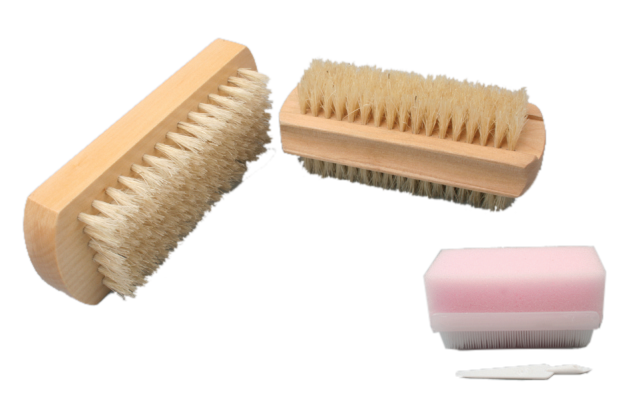Nail Brush, They’re some of the most important tools in your arsenal—but which brushes are best for the task at hand, and how can you prolong their performance? Check out these important tips and product picks.
[caption id="" align="alignnone" width="629"]

Nail Brush[/caption]
They’re some of the most important tools in your arsenal—but which
brushes are best for the task at hand, and how can you prolong their performance? Check out these important tips and product picks.
Whether you’re applying the gel, acrylic, polish, or nail art, there’s a common denominator in virtually all of your services: brushes. “The brushes you use can make or break your outcome when doing nails,” stresses Vu Nguyen, nail artist and dean of education for Gelish based in Kansas City, Missouri. But what types should you select, and how can you keep them operating at peak performance over the long haul? Start brushing up on your know-how with these expert insights.
Bristle Basics
The bristles of nail brushes are made from natural animal hair (usually kolinsky or sable), synthetic fibers, or a combination of both. Each tech has her own preferences when it comes to what works best and when. That’s why Nguyen advocates trying as many brushes for each application as possible to find the ones that work best for you.
Natural animal-hair brushes can outlast synthetics—and, if the gel is accidentally cured into the bristles, it can be removed, notes Amy Becker, CEO and artistic director of Masterworks by Amy Becker in Cedarburg, Wisconsin, who prefers kolinsky for its performance and longevity. Nguyen also gravitates toward natural kolinsky bristles for acrylics, explaining that they hold enough monomer to create the correct product ratio, and, therefore, the best beading. Meanwhile, nail brush Nguyen selects synthetic gels because they maintain shape and a wider synthetic model for fast lacquer application.
Again, however, much of it comes down to personal preference. “While I typically prefer sable
brushes, synthetic brushes aren’t necessarily bad,” says Chelsea King, Los Angeles-based celebrity manicurist, and blogger for chelseaqueen.com. “Sable frays less and lasts longer after dipping in gel, polish, and acetone. For nail art, I use nicer brushes when doing linework for crisp results and save my cheaper brushes for filling in large spots.”
